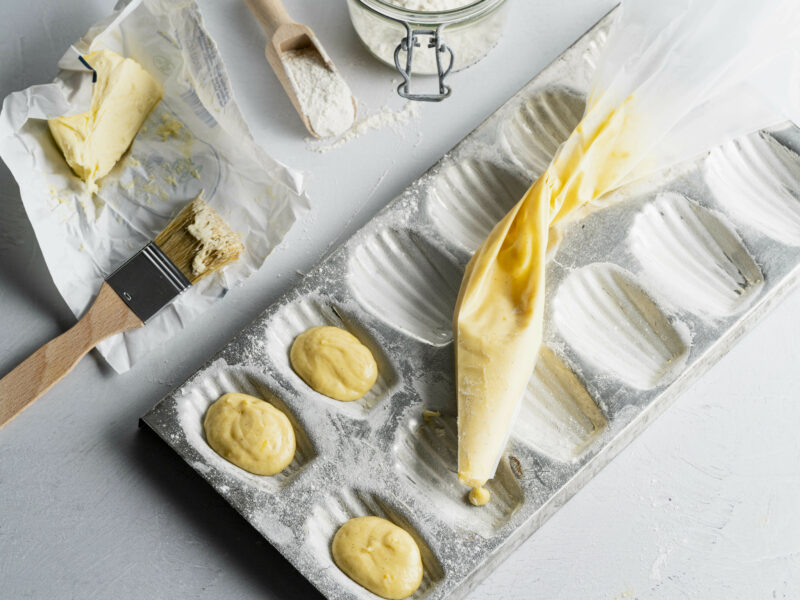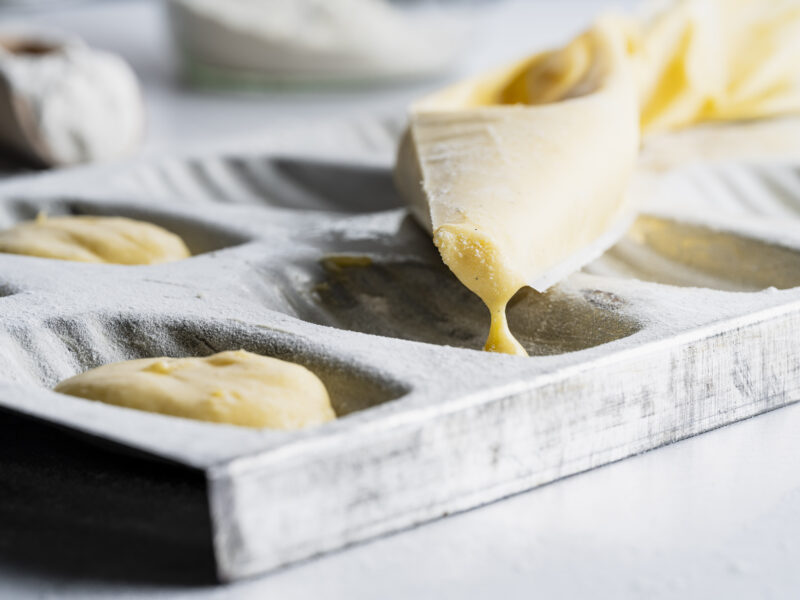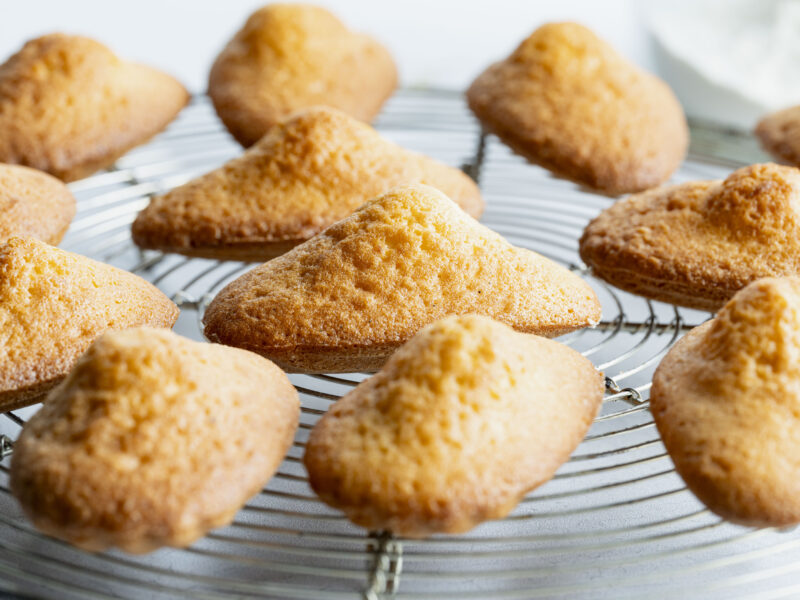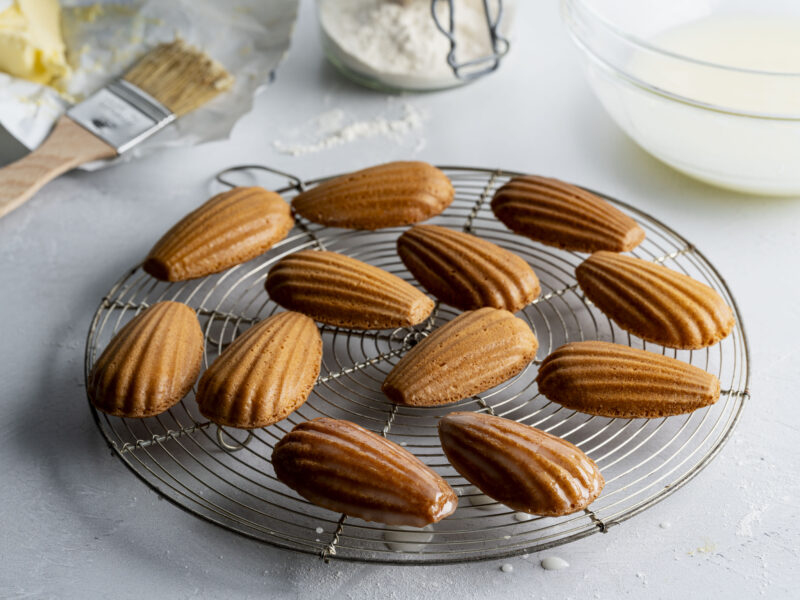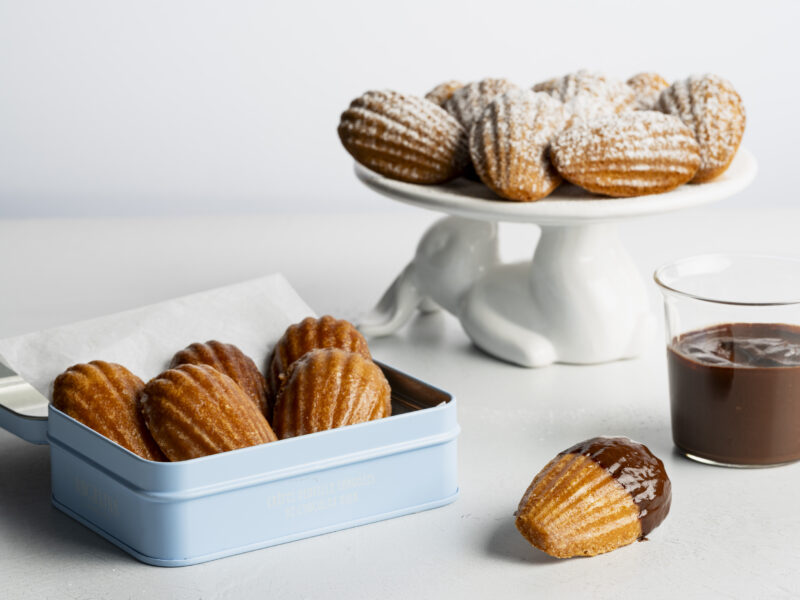Christophe Michalak's irresistible madeleines
Welcome to the delicious world of madeleines! These small, shell-shaped cakes have been a firm favourite for generations, and they're not just pretty to look at - they're a treat for your taste buds too. One of France's most renowned pastry chefs, Christophe Michalak, has put his own twist on this beloved pastry. His madeleines are soft and fluffy on the inside, and slightly crispy on the outside. So, put on your apron, crank up the oven, and let Michalak's madeleines do the talking for themselves!
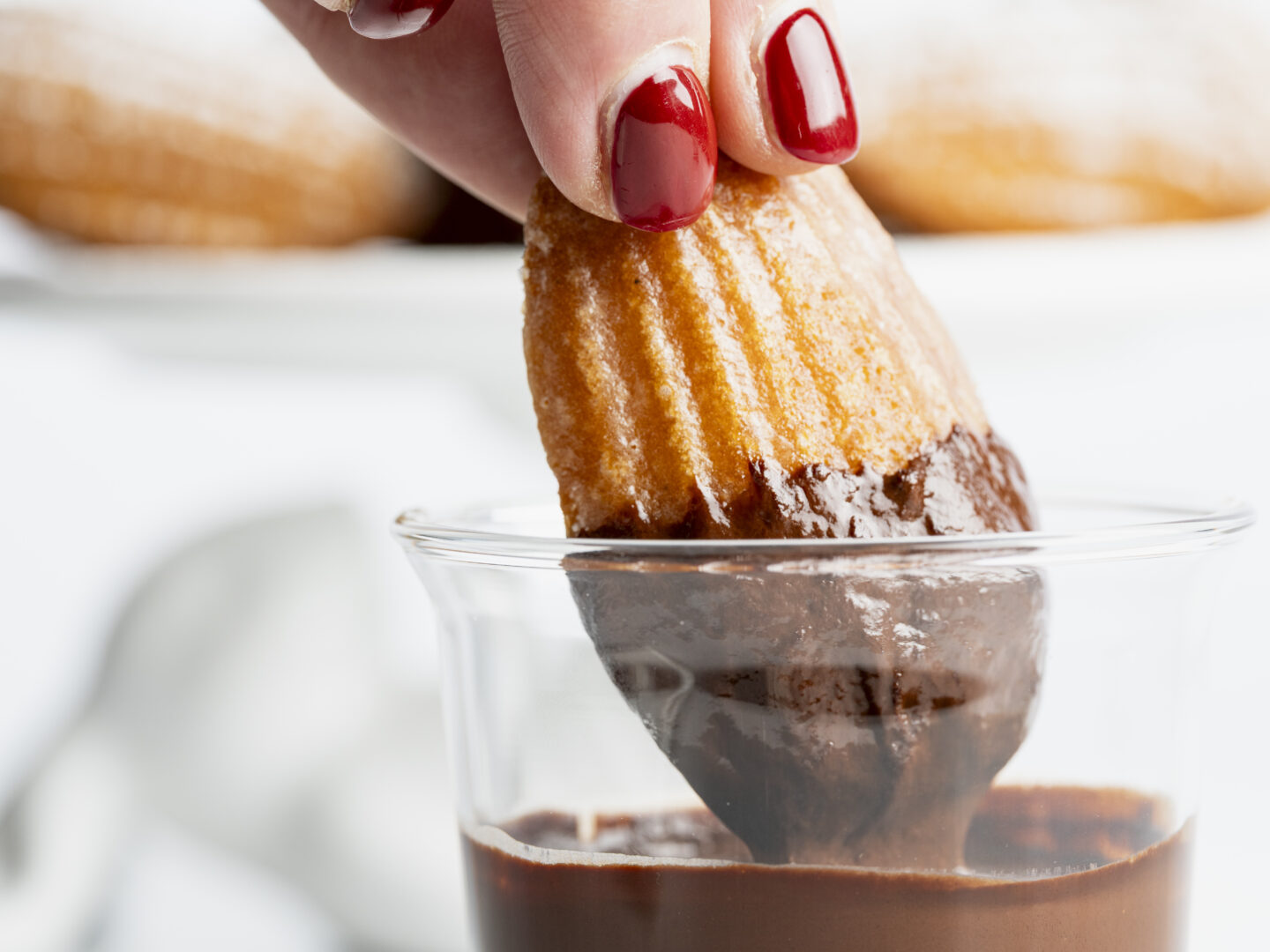
So, who invented madeleines?
The story goes that the madeleine was invented by a cook called Madeleine Paulmier, who worked for the Duke of Lorraine back in the 18th century. Apparently, the duke was so taken with these little cakes that he served them to king Louis XIV. The madeleines became a favourite of the king and his family and were often served at the court of Versailles. The distinctive shell-shaped cake we know today actually comes from the special baking moulds that were used back then.
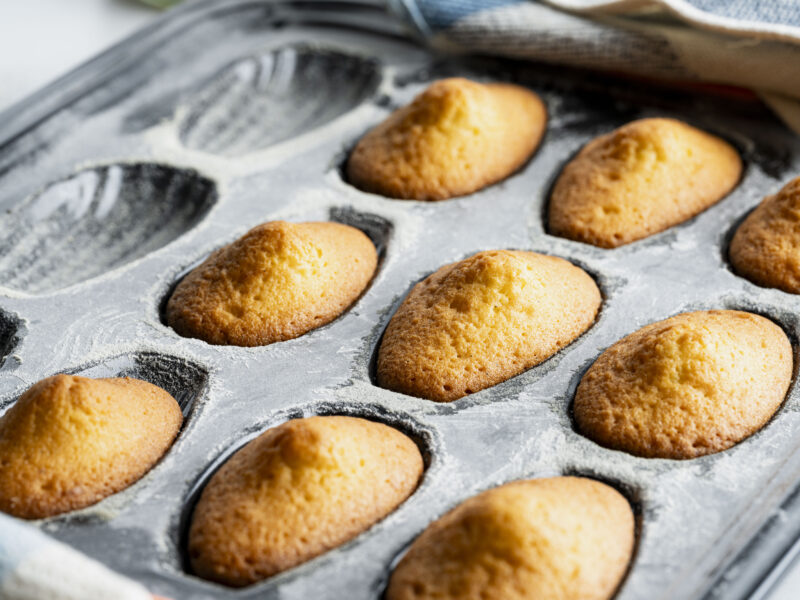
The madeleine of Marcel Proust
Did you know that madeleines are a big deal even in literature? In his masterpiece À la Recherche du Temps Perdu, Marcel Proust describes how the taste of a madeleine, dipped in a cup of tea, brings back a flood of memories from his childhood in Combray. So, what Proust is saying is that all of us have madeleine memories: you taste something in the present and the taste or smell takes you back to the past.
I have a madeleine memory too. For me, it's the smell of freshly baked waffles. It always takes me back to my godfather's kitchen. He was a chef, and he used to make our family delicious meals.
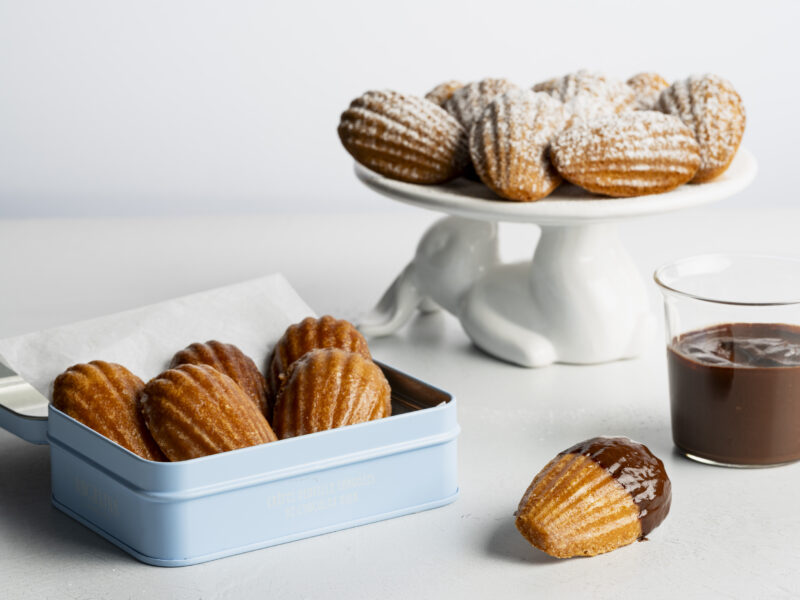
6 tips for making perfect madeleines
- Ingredients at room temperature: make sure that your eggs and butter are at room temperature. This will make your batter nice and smooth.
- Let the batter rest: leave the batter to rest in the fridge for at least an hour, but ideally overnight. This will give the madeleines their signature rise while they’re baking. You can store the batter in the fridge for 5 to 6 days.
- The right baking mould: use a shell-shaped baking mould to get that classic madeleine look. Metal moulds work better than silicone ones for a perfect, crisp result.
- Grease and dust the mould: to make sure your madeleines don't stick to the tin, grease the mould well with butter (make sure the butter is room temperature) and dust with flour.
- Fill the mould: fill the mould about two-thirds full using a piping bag. You don't want to fill it too much or the batter will run over the edges, and you'll end up with a madeleine that looks less than perfect.
- The oven temperature: It's really important to preheat the oven properly. Christophe Michalak raises the temperature to 250°C and turns off the oven when the madeleines go in. After about 10 minutes, the madeleines get their characteristic bump. Then he turns the oven back on to 180°C and carries on baking the madeleines until they're done. Not all domestic ovens can go that high though, so another option is to bake the madeleines at 190°C for 15 minutes.
Experiment with flavours
The classic madeleines have a vanilla and lemon aroma, but you can also experiment with other flavours. Why not try chocolate with orange, pistachio with raspberry or lavender with lemon? Matcha tea gives a contemporary twist to madeleines. And if you're a coffee lover, you can't go wrong with a madeleine with an intense espresso taste. So, which flavour do you think would be the most delicious?
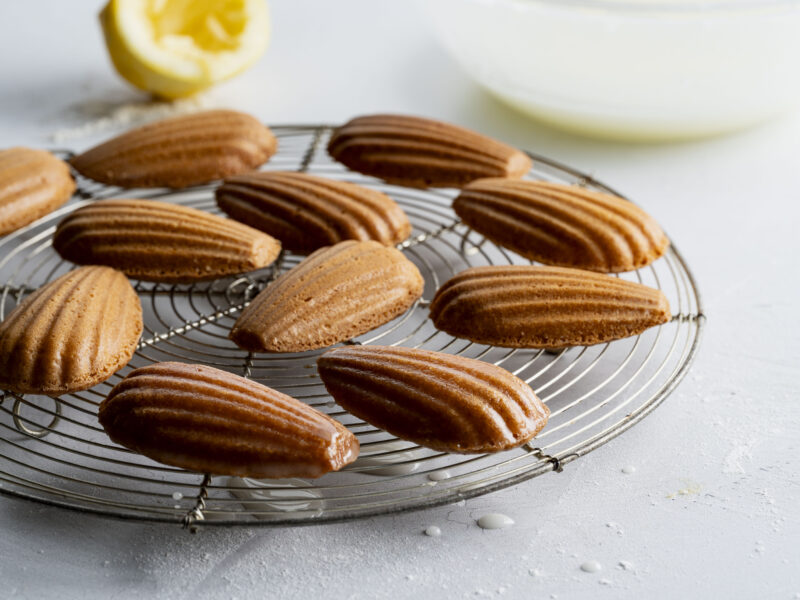
Recipe: Michalak’s madeleines
So, what's the secret behind Michalak's madeleines? Well, they're flavoured with olive oil and a crunchy layer of glaze. For extra indulgence, he also serves them with a chocolate sauce.
Ingredients for 24 madeleines:
- 130 g sugar
- 3 eggs
- 1 vanilla pod
- 30 g olive oil
- 150 g flour
- 1 teaspoon of baking powder
- 150 g melted butter plus 1 tablespoon for the mould
- zest of 1 lemon
To finish:
- 200 g icing sugar
- Juice of 1 lemon
- 75 g dark chocolate
- 25 g milk chocolate
- Pinch of fleur de sel
- 50 ml water
- 25 ml milk
-
Step 1: preparation
Grease a metal baking tin for madeleines with butter and dust with flour. Pat off excess flour.
![Madeleines 00252]()
-
Step 2: make the batter
First, beat the eggs with the sugar until light and fluffy (ruban). Next, cut open the vanilla pod, scrape out the seeds, and mix them into the ruban. Then, sift the flour and mix in the baking powder. Add the flour in parts to the ruban. Now add the olive oil, melted butter, and lemon zest. Mix to a smooth batter. Cover the batter, and let it rest in the fridge for at least 1 hour.
![Madeleines 00249]()
-
Step 3: bake the madeleines
Preheat the oven to 250°C. Put some of the batter in a piping bag and fill the moulds to 2/3 in the middle. Place the baking tin in the oven and switch off the oven. After 10 minutes, the typical lump will form. Turn on the oven to 180°C and continue baking the madeleines for another 10 to 12 minutes. Another option is to bake the madeleines at 190°C for 15 minutes. Remove the madeleines from the oven.
![Madeleines 00281]()
-
Step 4: glazing and finishing
Heat the oven to 220°C. Mix icing sugar with lemon juice to make a liquid glazing. Dip the madeleines in the glazing and place them on a perforated baking tray with the shell shape facing up. Put the madeleines in the oven for 1 minute to fix the glazing. Remove them from the oven and put them in the freezer for 1 minute.
![Madeleines 00263]()
-
Step 5: the chocolate sauce
Melt the chocolate with salt and water in a saucepan. Stir in the milk. Pour the chocolate sauce into a glass and serve with the madeleines.
![Madeleines 544]()
